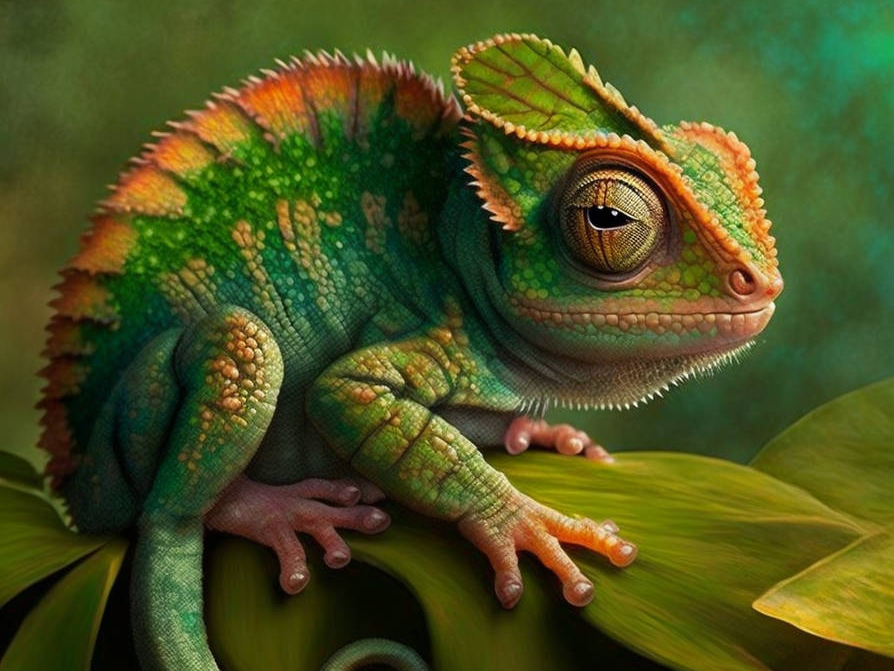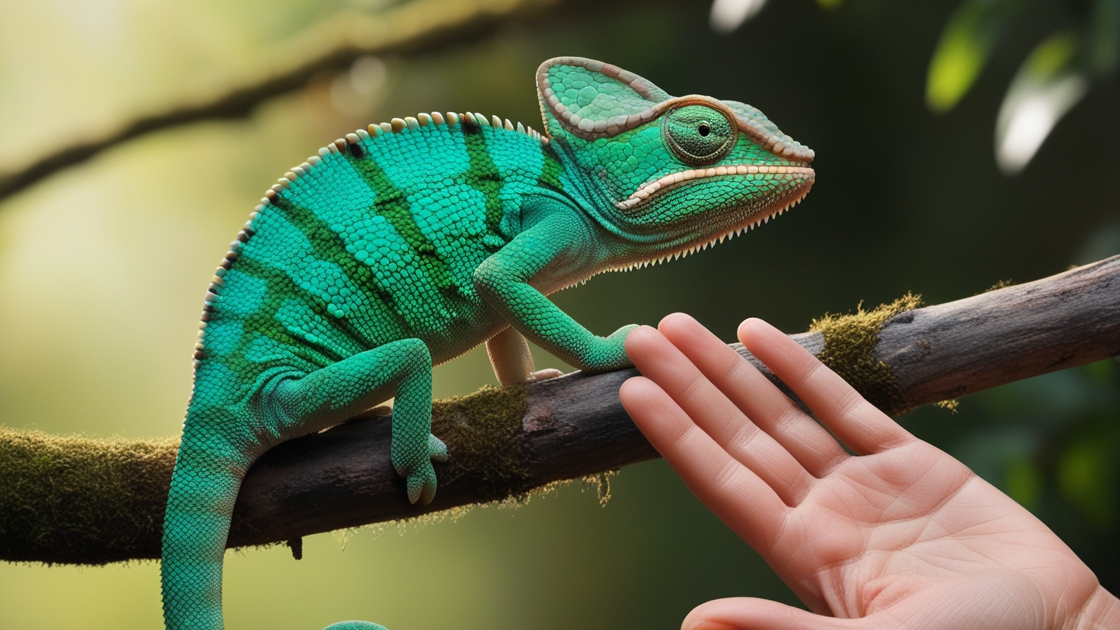Did you know that a chameleon’s bite can be stronger than you’d expect from such a tiny reptile? While they may seem like harmless, color-shifting creatures, a startled chameleon can pack a surprising punch when it clamps down.
But does a chameleon bite hurt? And what should you expect if you’re on the receiving end? Don’t worry—it’s not as scary as it sounds. In fact, most chameleon bites are more shocking than painful.
In this article, we’ll break down the truth about chameleon bites, revealing seven fascinating facts about why and when they bite, and how you can keep your pet calm to avoid those unexpected nips. Stick around to become a chameleon-handling expert!
1. The Colorful Chameleon: Nature’s Master of Disguise

Chameleons are some of the most intriguing creatures you’ll encounter in nature. Known for their dazzling colors and ability to blend into their surroundings, these little lizards can catch anyone’s eye.
Chameleons are nature’s fashionistas. With their incredible ability to change colors, they can go from bright greens to earthy browns in the blink of an eye.
This remarkable skill isn’t just for show; it helps them communicate and hide from predators, making the panther chameleon a master of disguise.
Imagine walking through a vibrant rainforest and spotting one of these beauties; it’s like finding a hidden gem!
But what happens when you get too close and one decides to bite you? That is exactly where the essence of understanding the question “Does a Chameleon Bite Really Hurt?” comes to play.
Let’s get into the world of chameleons and find out if their bites really hurt!
2. Understanding Chameleon Bites: Are They Painful?
Now, let’s get to the burning question: Does a chameleon bite really hurt?In short, the answer is yes, but not in the way you might think; their mouth is designed more for catching insects than for inflicting pain.
A chameleon’s bite can feel like a sharp pinch rather than a painful chomp. Their teeth are small and designed more for gripping prey than for causing injury.
So, while it’s not a pleasant experience, it’s usually manageable, especially if you remember that a chameleon would prefer to avoid biting.
3. The Science Behind Chameleon Teeth: What Makes Them Special?
So what’s up with those tiny teeth? Chameleons have specialized teeth that help them catch and hold onto their food. Think of them as little fish hooks, great for snagging insects, but not so great for biting humans.
Their bites can puncture the skin, but serious damage is pretty rare, and while a panther chameleon can draw blood, it is usually not severe.
4. Knowing their Stress Signals: Why Do Chameleons Bite?
Chameleons are generally calm creatures. They prefer to avoid confrontation and rely on their camouflage to stay safe. But if they feel threatened, they might resort to biting. This behavior usually comes from fear rather than aggression.
If you ever spot a chameleon in the wild, give it some space. Observing them from a distance is the best way to enjoy their beauty without stressing them out, as chameleons may feel threatened if approached too closely.
5. First Aid for a Chameleon Bite: What to Do if You Get Nipped

If you do get bitten, don’t panic! Here’s a quick guide to handling a chameleon bite:
Clean the Area: Wash the bite site with soap and water to prevent infection.
Apply Ice: If it’s swollen, ice can help reduce any puffiness.
Monitor for Symptoms: Keep an eye out for any unusual signs, but most bites heal quickly.
And remember, the best way to avoid a chameleon bite is to be gentle and respectful when handling them.
6. Facts About Chameleons: More Than Just Their Bite!
Chameleons are full of surprises! Here are some fun facts that might just blow your mind:
Independent Eyes: Chameleons can move their eyes in different directions. This helps them spot predators while watching their prey!
Tongue Power: They can shoot out their tongues at lightning speed to catch insects. Talk about fast food!
Social Creatures: Some chameleons can change colors to express emotions, like excitement or fear.
These quirky traits make chameleons a delight to observe in their natural habitats.
7. How to Handle a Chameleon: Tips for Stress-Free Interactions

If you’re lucky enough to interact with a chameleon, here are some tips to make it a smooth experience:
Be Calm: Move slowly and speak softly. This helps keep your chameleon buddy relaxed.
Use Both Hands: When holding one, support its body properly to make it feel secure.
Exploring the outdoors gives you a chance to observe these incredible reptiles in their natural environment. Just remember to keep a respectful distance!
In Summary: Chameleons as Pets
So does a chameleon bite really hurt? As you’ve come to discover in this article, chameleons are amazing creatures with so much to offer as pets, but be mindful of its claws and how aggressive it can be.
Now, you are better informed when it comes to knowing how to handle chameleons and what to do if you get nipped by a chameleon.
So, next time you’re outdoors in nature, keep your eyes peeled for these colorful lizards. Usually when you’re hiking through a lush forest or strolling along a sunny trail, you might just spot one.
Now that you know all about chameleons, why not head outside and see if you can find one? Don’t forget to leave a comment if this was helpful.


